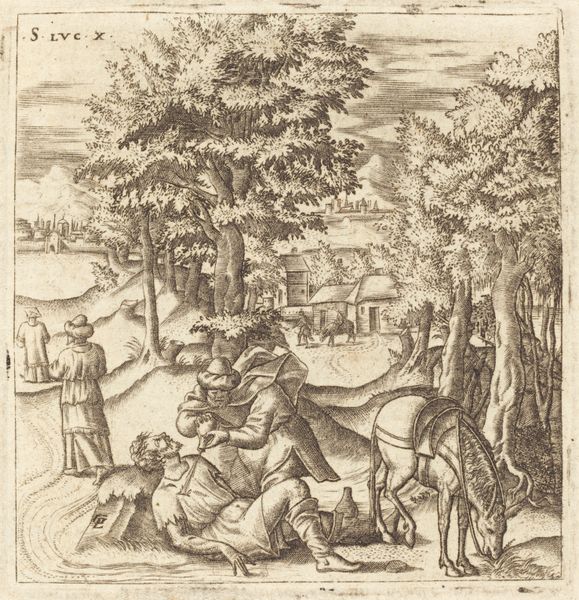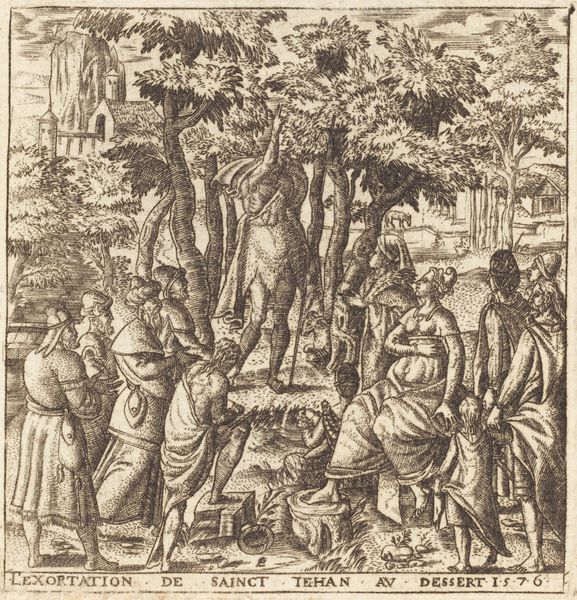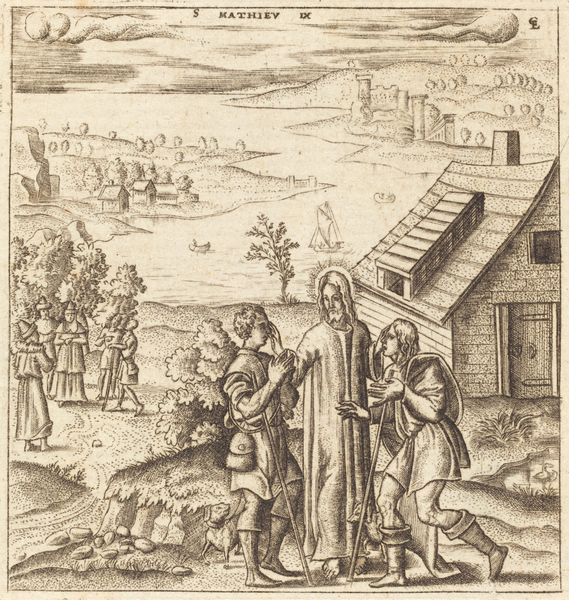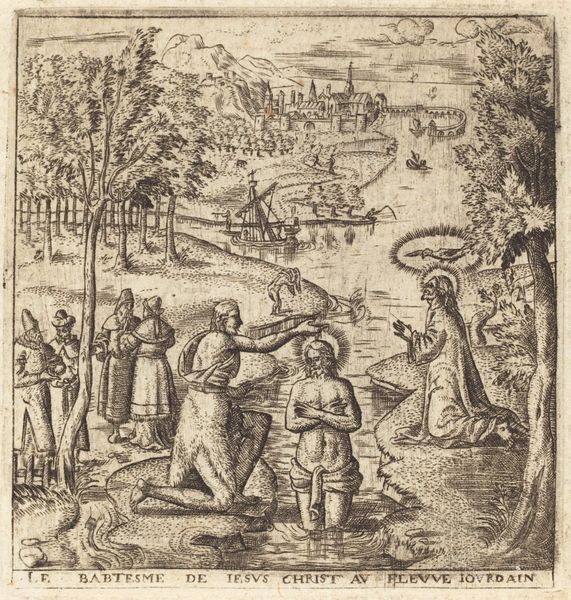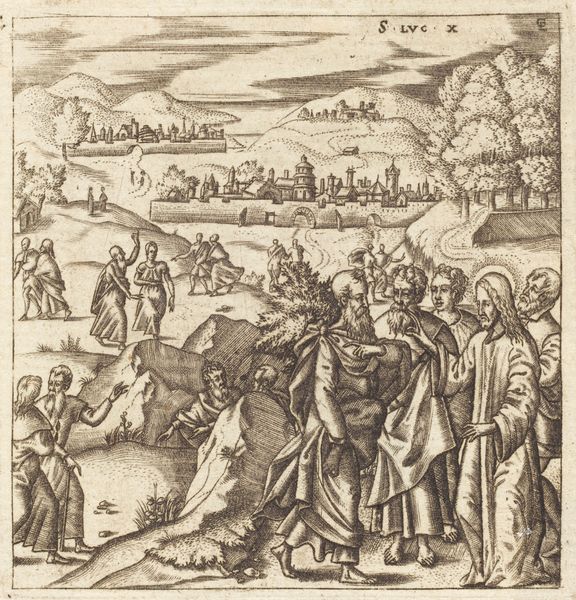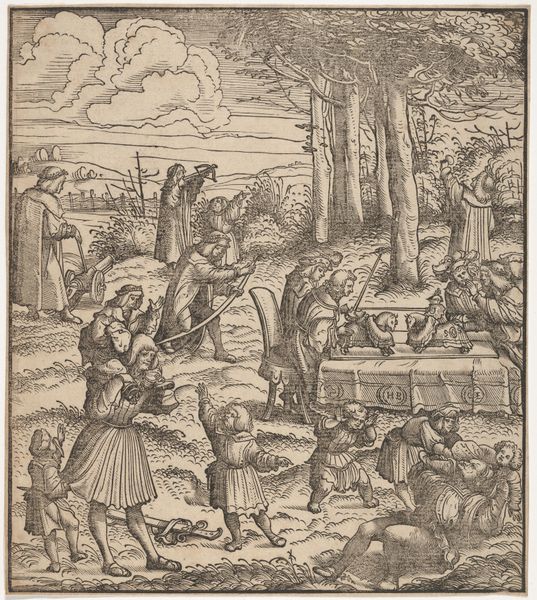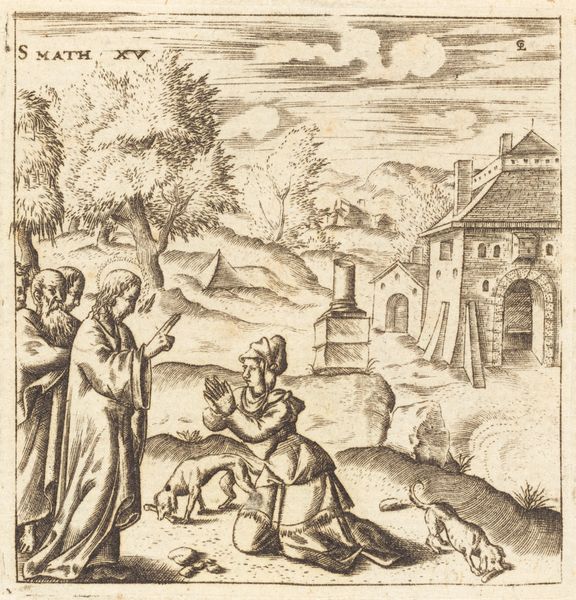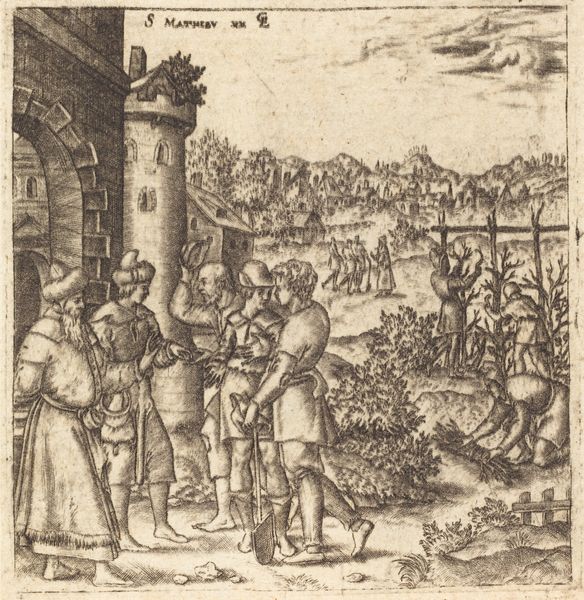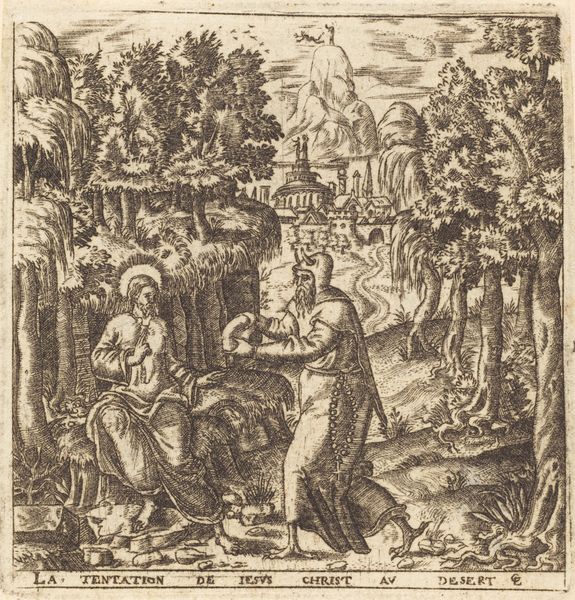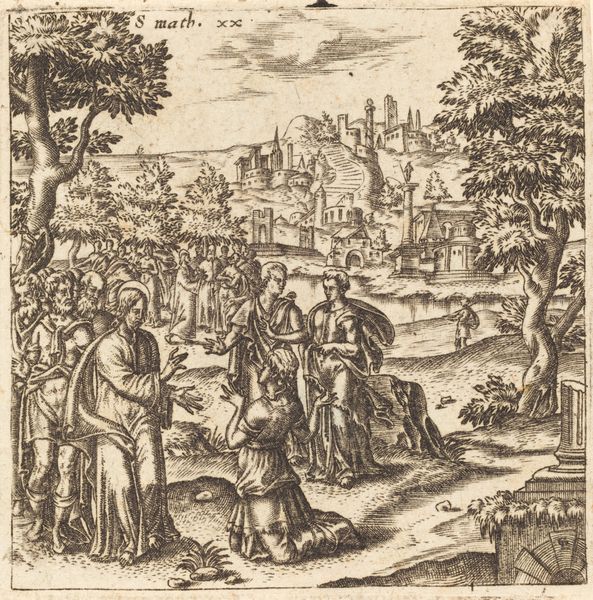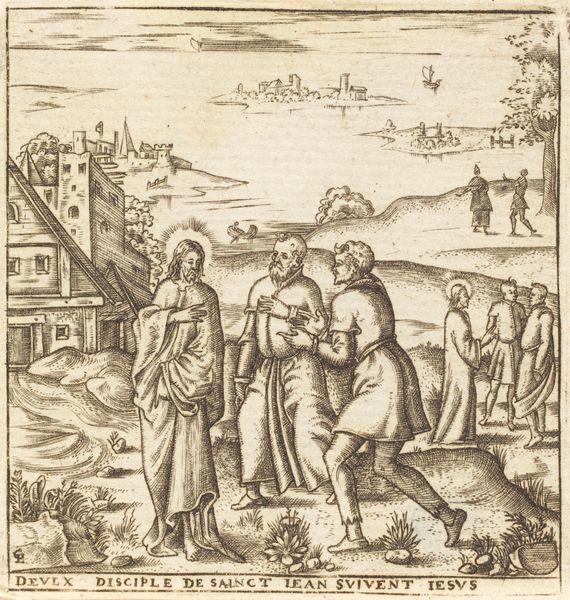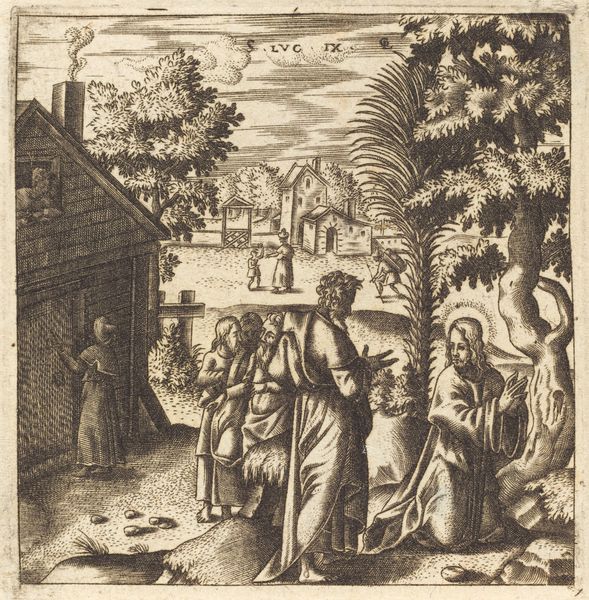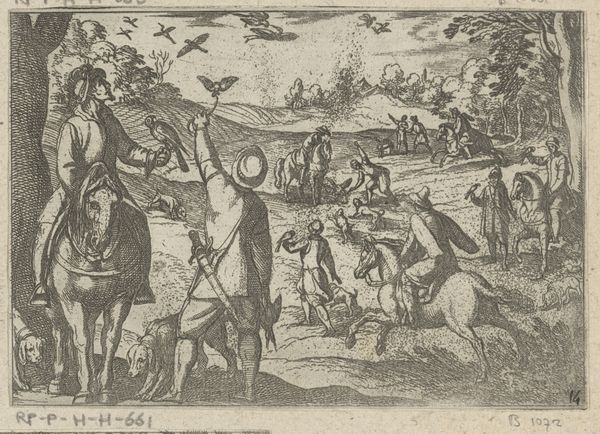
print, engraving
#
narrative-art
#
pen drawing
# print
#
landscape
#
11_renaissance
#
history-painting
#
northern-renaissance
#
engraving
Copyright: National Gallery of Art: CC0 1.0
Editor: Here we have Léonard Gaultier’s print, "Parable of Weeds in the Wheat," created around 1576-1580. The busyness of the scene is immediately striking. There are figures toiling in the field, a house, trees, and the titular exchange in the foreground. How would you interpret the organization of space within its historical and social context? Curator: Well, Gaultier offers us a window into the social anxieties of the late 16th century through this biblical narrative. This seemingly simple agricultural scene is pregnant with social commentary. What do you notice about the figures’ activities, particularly concerning labor and hierarchy? Editor: There are some men actively burning what seems to be wheat in the left foreground while, further back, others work in the field, with one taking some harvest to an elderly man with elaborate garb. It looks as if one group’s toil is deliberately undone by another. Curator: Precisely. The print serves as a political allegory, speaking to religious conflict of the Reformation. The burning represents the purging of undesirable elements, reflecting anxieties regarding social and religious purity. Do you see the role that landscape plays? Editor: Yes, the seemingly peaceful and well-ordered landscape belies the conflict playing out within it, providing an almost ironic backdrop to the destructive act taking place. It makes me wonder about the targeted audience, the way people understood propaganda. Curator: The engraving would have been widely disseminated. Think about the role of prints as vehicles for political and religious messaging during that period and consider how the public engaged with imagery within those socio-political debates. Editor: Seeing how art engages directly with such potent cultural fault lines really brings history to life. I'm walking away with a deeper awareness of how prints influenced Renaissance society. Curator: And I'm reminded how crucial it is to constantly revisit such artwork as primary sources for understanding enduring socio-political debates and its expression of humanity.
Comments
No comments
Be the first to comment and join the conversation on the ultimate creative platform.
